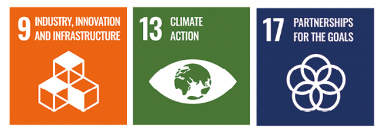Calendar
Zero-and Low-Emission Innovation Forum
Location: Virtual
A three-day online/virtual forum to support emission reduction in shipping to be held on 27-29 September 2021.
IMO’s Initial GHG Strategy sets out ambitious goals to cut annual GHG emissions from shipping in half by 2050 and phase them out this century. But shipping largely depends on fossil fuel and the energy transition in shipping will require new technologies, alternative fuels and infrastructure to support low-and zero-carbon shipping.
This energy transition relies on ambitious collaboration and cooperation among many different stakeholders, including land-based energy suppliers and port operators, as well as major investments. It will also require innovation, in relation to addressing technological needs, new forms of operation, cooperation and finance.
About the Zero- and Low Emission Innovation Forum
The IMO-UNEP-Norway Zero-and Low-Emission Innovation Forum is a global platform aimed at championing innovation to accelerate the transition of the marine sector towards a zero- and low-emission future. The focus will be on addressing specific needs of developing countries, especially Least Developed Countries (LDCs) and Small Island Developing States (SIDS).
The Forum is supported by the Government of Norway, the IMO Secretariat and the United Nations Environment Programme (UNEP) in order to promote innovation by providing a global platform to exchange best practises and fill necessary gaps by gathering ideas and latest developments from all competent international policy makers.
Key Goals
The aim of the Innovation Forum is to:
– Exchange best practice between competent international policy makers, maritime, climate change/environmental administrations, technology developers, maritime industry, ports and finance to catalyse collaboration and innovation for climate action in maritime sector and find practical solutions to drive the necessary innovation;
– Promote innovation through north-south and south-south collaboration with a focus on SIDS and LDCs;
– Fill the existing gaps by providing a global platform to discuss ideas related to promotion of innovation, disseminate latest developments, and promote knowledge management as well as information sharing.
Focus Areas
1. Knowledge-sharing globally on best practices to address reduction of GHG emissions from shipping;
2. Finding solutions to identified innovation needs and challenges (especially in developing countries/LDCs and SIDS) including in relation to cooperation needs, funding and/or processes;
3. Addressing technology needs of developing countries, especially SIDS and LDCs as well as research needs for developing innovative GHG technologies and financial needs for their piloting, distribution/entering of the market particularly in developing countries;
4. Strengthening and coordinating global and regional networks/nodes on/for innovation in maritime sector.
Background
Bridging the emissions gap: The role of international shipping
Despite a dip in 2020 carbon dioxide emissions due to the impact on economies and travel of the COVID-19 pandemic, the world is still heading for a temperature rise in excess of 3°C this century. International shipping, whichtransports more than 80% of global trade by volume, in some 60,000 cargo-carrying ships, carrying. 11 billion tons[1] of world trade is also contributing to GHG emissions, which with growing trade volumes under a business-as-usual scenario could without any mitigation action grow further. According to the 4th IMO GHG Study, based on a range of plausible long-term economic and energy business-as-usual scenarios, shipping emissions could represent 90-130% of 2008 emissions by 2050.
About two-thirds of shipping related emissions are international, and hence do not appear in national emissions reporting or decarbonization strategies. In 2018, IMO adopted an Initial GHG Strategy, setting out the ambitious goal of cutting annual greenhouse gas emissions from international shipping by at least half by 2050 compared with their level in 2008, and working towards eliminating GHG emissions from shipping as soon as possible in this century.
Shipping largely depends on liquid fossil fuels, and has inherently long technology development and fleet turnover times. The shipping sector must undergo an energy transition that that needs to combine large improvements in energy efficiency with a rapid transition away from fossil fuel.
The energy transition in shipping will require new technologies, alternative fuels and infrastructure to support low- and zero-carbon shipping. Shipping is likely to transition from majority reliance on liquid hydrocarbon fuels to a diverse range of alternative sources of energy for ships operating at sea and in ports.
This energy transition relies on ambitious collaboration and cooperation among many different stakeholders, including land-based energy suppliers and port operators, as well as major investments. It will also require innovation, both in relation to addressing technological needs, new forms of operation, cooperation, and finance.
Sustainable Development Goals (SDGs)
The 2030 Agenda for Sustainable Development provides a shared blueprint for prosperity for people and the planet, now and into the future. At its heart are the 17 Sustainable Development Goals, which are an urgent call for action in a global partnership.

For more information, please contact:
Ms. Gyorgyi Gurban, ggurban@imo.org;
Ms. Marija Vranic, mvranic@imo.org
